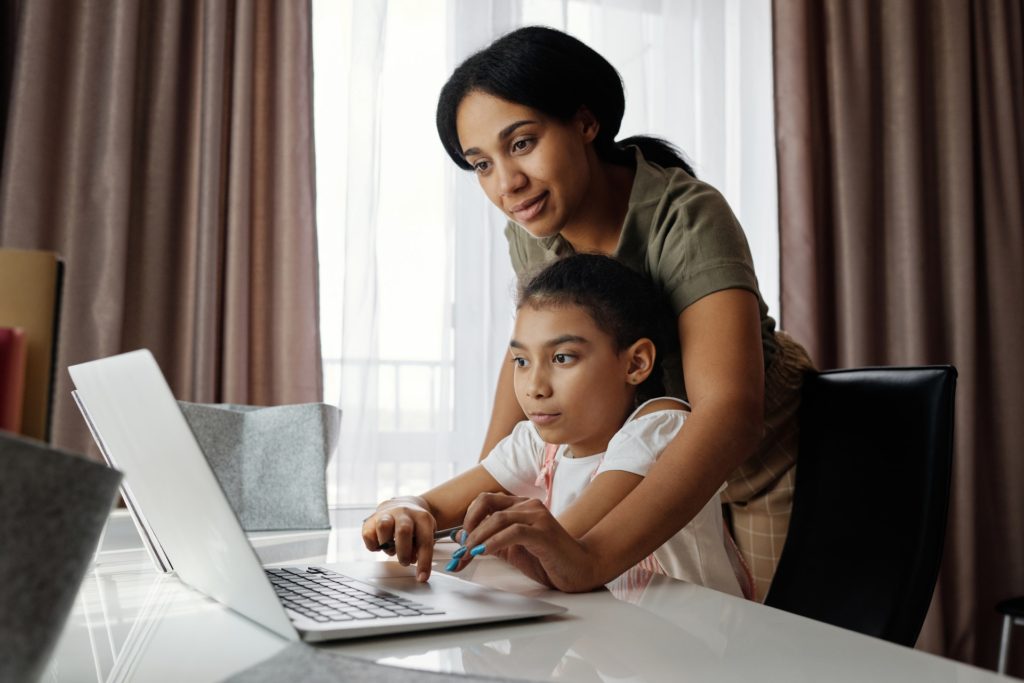
In his latest article, Voqal education program director, Vinny Badolato, examines hybrid learning during the pandemic and what it means (or doesn’t mean) for the future.
It’s been about one year since life as we knew it changed and oh, what a year it has been for education. One year ago, the vast majority of the over 100,000 K-12 schools in the U.S. closed their doors due to the COVID-19 virus that has been consuming our collective attention ever since. What we have seen since that time is several educational delivery models being implemented — some well, most not so much — throughout the nation. From no school at all to full virtual school to schools open with few restrictions to everything conceivable in between, education in the U.S. has been transformed into something unrecognizable pre-pandemic.
The one constant during this tumultuous time in education has been the wide and rapid adoption of educational technology (ed tech) tools to help with some kind of educational delivery continuity. And the ed-tech sector (some of it) has been booming as a result. Over the last six months, I have read article after article about how much money is currently flooding into ed tech and how the promised future of an education system where anyone can learn anywhere at any time has finally arrived. Of course, that excludes the millions that don’t have access to this technology because of the digital divide, but that’s a topic for another time.
I’ll be honest. If virtual, hybrid, asynchronous/synchronous learning is the future of public educational delivery, then count me out. The digital dream that has been abruptly thrust upon school children due to COVID-19 has been really more of a nightmare for millions of parents, children, and teachers. From a personal perspective, virtual or hybrid school has been very challenging in my household, especially for our sixth-grader who is just not engaged with his classes when he is on a computer. And I don’t blame him. I have trouble staying fully engaged with professionally produced online courses, and I’m an adult who has extensive experience with learning, not a 12-year-old taking his classes through Zoom or Meet. And I am not alone in thinking this.
This is in no way an indictment on the teachers. They are rock stars. I have listened to a lot of classes over the last year and teachers are doing the best with what they have — a mediocre way to deliver education, especially with younger students. Virtual learning does not work well for the majority of kids. The pandemic has thrust that conclusion upon us.
I know some say virtual school is not engaging because many teachers either don’t know or have never been taught how to use technology well to deliver education. Some say that many of the apps being used are not intended for K-12 classroom instruction (i.e. Zoom). Others might say that we are gathering all this great data on what works and this very large, year-long experiment will pay dividends (literally) in future developments and new apps. I think all these people have valid points, but I still don’t think that any of these reasons will change the fact that education delivered mostly virtual is just not appropriate or effective for most kids.
It is important to state that I support the use of technology in education. Backing ed-tech companies and nonprofits is a big part of my job. What the pandemic has made loud and clear to me, however, is that the prime use of technology in education should only be as a supplement to, or a way to assist in, the delivery of instruction. Or as a potential way to make teachers’ jobs easier (I am still iffy on this second one as several factors led to the technology currently being marketed as such, making the job more complicated by adding to already-packed schedules).
What really keeps me up at night, though, is the real potential that our experience with virtual and hybrid schooling will have opened the gates for those in power who want to dismantle, or “transform,” the public education system to start making more use of this subpar delivery in the name of “efficiency.” States and localities are responsible for about 90% of school budgets (notwithstanding the recent $180 billion federal stimulus to schools), and both levels of government are in for some lean times over the coming years due to the fallout from the pandemic. I fear that there will be those who press hard to make virtual and hybrid learning the “normal” way to deliver K-12 education as a way to cut public school budgets. And I know that our public school system and, most importantly, many kids will suffer for it.
But for now, our sixth-grader will be joining his elementary-aged siblings in returning to 100% in-person classes on April 5. And I can’t wait.
You can learn more about Voqal and Vinny’s work to address opportunity gaps in education on our investing for educational impact page.